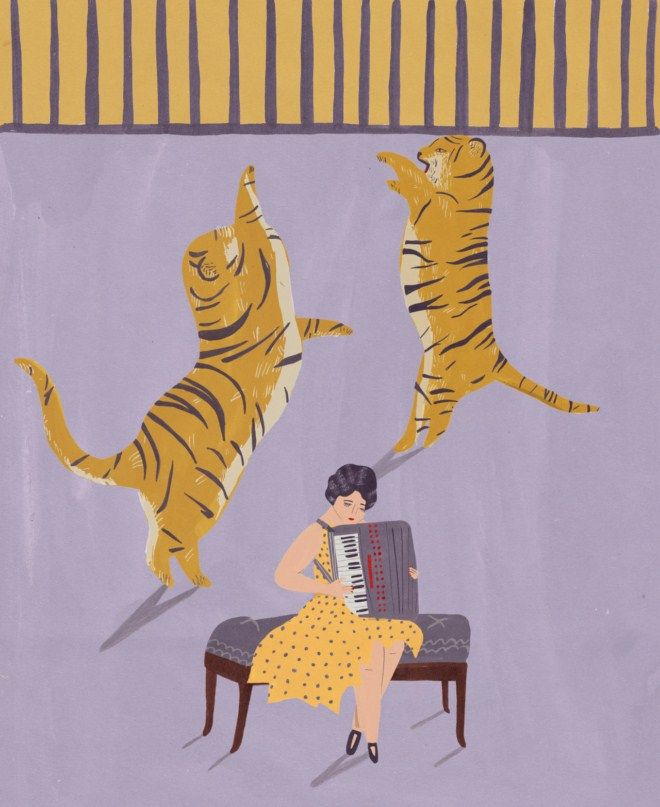He is no longer a journalist masquerading as a clown ... circumstance has turned him into a real clown.
As it turns out for Walser, the circus is not all it’s made out to be, but Fevvers has started to become something other than her “fact or fiction” celebrity puff piece.
Not caught up yet? Here’s part one:
Here we go with part two - spoilers ahead!
Having convinced his editor that he should join the circus, Walser is now - thanks to Sybil, a fortune-telling pig - undercover and living in Clown Alley, where he is sending secret dispatches back to his newspaper. Fevvers hasn’t realised that Walser is tailing her, until he (quite literally) reveals himself in an incident with the Ape Man’s partner and an escaped tiger.
Walser’s clown circus is a completely different world to Fevvers’ star-studded celebrity status, and this difference is pulled into stark focus when Carter treats us to a night at the clowns’ table, where chief clown Buffo the Great is slowly falling into a deep depression, and where Walser is not faring much better, having become entirely clown after his arm has been injured by the tiger, meaning he cannot type. Meanwhile, the Ape Man’s partner - Mignon - has left him and struck up with the tiger-taming Abyssinian Princess as part of her tiger act.
Outside of the circus, Fevvers is on a date with a Grand Duke, who is very interested in the Cockney Virgin (echoing, maybe, the date she was on in the last section). Fevvers escapes into a Fabergé egg and makes it back to the circus train just in time - but hold on, what just happened? Escaped into a Fabergé egg??
How are you getting on? Does Fevvers seem more or less “real” to you now, in the midst of all this going on? What do you make of that final scene with the Fabergé egg?
More reading…
It’s not *that* 100 books list, but the BBC picked Nights at the Circus as one of its 100 “most inspiring” novels a couple of years ago (apologies for the Rowling jumpscare). I am notoriously bad at podcasts, but I’ve started working my way through Turn Up for the Books.
Michael Wood’s 1984 review of Nights at the Circus in the LRB sits alongside Joan Didion’s Democracy and Alice Walker’s In Love and Trouble. What company!
Angela Carter will have none of this subservience of fiction to gloomy fact. She sets her Nights at the Circus in the last months of the 19th century and makes quite a bit of play with the timing, but insists that her narrative, ‘as must by now be obvious’, does not belong to ‘authentic history’. It belongs instead to the history of hubris, imagination and desire, and a very disconcerting narrative it is.
From last year at
, I loved this Nights at the Circus segue into an interview with artist Chelsea Pettyjohn about the childrens’ books that shape her art:
Still to come:
Friday 16th August — Part three, Siberia
Content warnings: sexual assault, violence, animal abuse
The buddy reads are for everyone to join in on, but if you’re considering a subscription, you’ll gain access to writing prompts and community posts, plus discounts on our courses and workshops. This Substack is reader-supported, and paid subscriptions mean I can do more of it!
See you in a couple of weeks for the grand finale!







